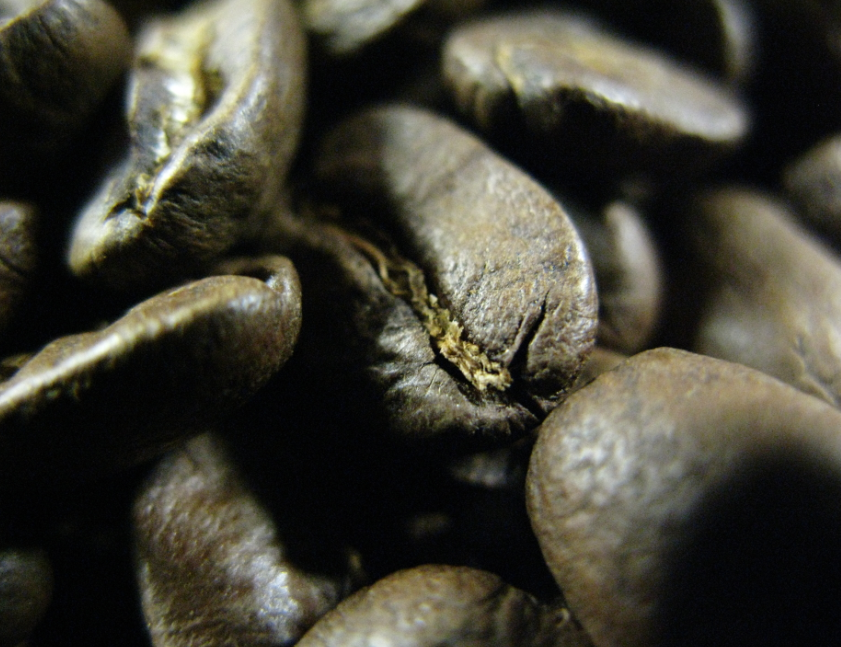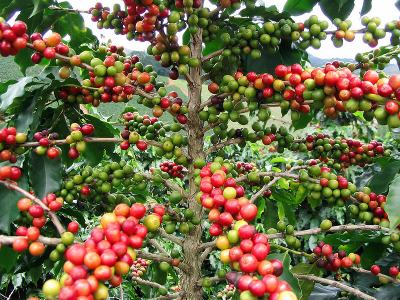Boutique Coffee beans: boutique Coffee vs Commercial Coffee guarantee the quality of Coffee from the Source
The small coffee town of Lisalda in Caldas, Colombia
Why is boutique coffee called "boutique"?
The quality of fine coffee is much higher than that of ordinary commercial coffee.
But why?
Does it mean that boutique coffee is born more delicious?
Of course not!
The process of producing micro-batch boutique coffee is complex and tedious. From the selection of fertilizers to the shaded area of trees, from the altitude of planting to the species of coffee beans, all factors will affect the final quality of coffee. Of course, it is not enough to decide where to grow which kind of coffee. In order to grow boutique coffee, you must pay full attention and closely monitor the whole production process.
To sum up, the quality supervision of boutique coffee in the planting stage is divided into three steps:
Pick only bright red fruit and pick coffee.
Do you think coffee picking is easy? In fact, this is not the case, the first step in quality supervision of boutique coffee is from the picking process.
In the past, the principle of coffee picking was to remove all coffee fruits within the field of vision, whether the fruit was green, yellow, red or black. I heard you right. Take off the black ones, too! In those days, quantity outweighed quality, and coffee was regarded as a very common commodity rather than a luxury. At that time, people believed that the more coffee was produced, the more money it made.
Don't take the green ones, take the red ones!
But with the rise of the "third wave" of coffee, the business model of coffee cultivation has undergone earth-shaking changes. Pickers working on boutique coffee plantations are only allowed to pick bright red, fully ripe fruits. This is important because immature or ripe fruit can make coffee taste sour or bitter. This transformation is painful and difficult for most traditional plantations because the compensation of pickers is directly linked to the total weight of the fruit. In boutique coffee plantations, although the picker's salary is also calculated on the basis of weight, the difference is that the less fruit the picker picks, the more diligent he picks and the higher his salary is.
Coffee picker George (Jorge) is bending the top of the tree in search of the brightest, fully ripe fruit. Picking is not an easy job!
Of course, the picker can not be absolutely perfect, at the same time, some immature or ripe fruit will fall into the fruit basket. Some plantations with more stringent quality regulations require pickers to pick the fruit again after the first harvest in order to remove coffee fruit that does not meet the requirements. Only in this way can people ensure that the coffee has reached the highest quality before it is processed.
George shows us the picked coffee fruit.
Find out the defective coffee beans and choose the coffee.
After processing, coffee beans begin a long drying process, until the water content reaches a certain level, coffee can enter the shelling stage. This is the second important link in the quality supervision of boutique coffee.
Why check the quality of coffee over and over again? Because even the most red-looking peel hides beans with flaws and defects. This is impossible for the naked eye to judge, and only when it comes to the shelling stage can you really tell which coffee beans are defective.
Coffee producer Rosa is hand-picking "parchment" coffee.
Coffee beans with defects or defects are picked out by hand. These beans are called "Pasilla". Unfortunately, these "Pasilla" will still be in circulation in the market, and it is the producers of commercial coffee and some local residents who buy these defective beans.
Detection of the last joint raw bean in coffee production
Once the raw beans are shelled, the whole production process of coffee will come to an end, but quality supervision will continue. Before baking, people must test the quality of raw beans. Similarly, "parchment" coffee can also cover up some of the defective coffee. According to the American Fine Coffee Association (SCAA) standards, boutique coffee must be "0" defective, so it is important to pick out defective coffee.
Defective and defective coffee raw beans shown in the Columbia Coffee Federation laboratory
In the past, the picking of raw beans was done by hand, but now many people choose to use more efficient instruments to test raw beans, but the reason why manual picking still exists is that it can create more jobs for local people.
Workers pick raw coffee beans by hand at the Azahar factory in Armenia, Colombia.
Compared with those large factories that pursue economic benefits, what we focus on is not efficiency, but whether it can help the local society and economy to develop healthily and sustainably, so we prefer manual selection.
Raw bean pickers in other factories in Colombia
Cooked bean taste: quality supervision is consistent.
At this point, the coffee has completed its life cycle in plantations and processing plants, ready to be roasted. But if you think that quality supervision is no longer necessary at this stage, you are dead wrong! Quality supervision is consistent, and unless the taste of coffee is perfect, we will not relax for a moment!
Cup testing in the Columbia Coffee Alliance Laboratory
After the strict control of the above three steps, the defects and defects of coffee have been controlled to a minimum.
Quality supervision is the strongest guarantee of fine coffee!
In order not to let the fruits of previous workers' work go to waste, we must learn to appreciate the taste and quality of coffee. Only in this way can you really realize the true value of boutique coffee and the profound meaning behind its delicate taste. Only by ensuring the quality from the source, can boutique coffee be really called "boutique"!
Hundreds of people work hard day and night, just for a cup of perfect coffee!
Source: country of coffee
Important Notice :
前街咖啡 FrontStreet Coffee has moved to new addredd:
FrontStreet Coffee Address: 315,Donghua East Road,GuangZhou
Tel:020 38364473
- Prev

Boutique coffee beans: introduction to the baking of charcoal-fired coffee beans
The origin of charcoal-roasted coffee originated in the beautiful island country of Japan, where the Japanese have a spirit of indomitable defeat. When coffee is dominated by Europe, the United States and Latin America, the Japanese still want to reposition other people's things and find another way to design a different kind of coffee to find their own market space, so charcoal-fired coffee is driven by this spirit. Charcoal coffee maker
- Next

Fine coffee beans: 4 forms of Ethiopian coffee growing and producing
Growth and production patterns: There are four growth and production patterns in Ethiopia, from which 95% of coffee is produced. 1. Forest In Ethiopia's coffee-producing areas in the south and south-west, most of them are wild or planted under natural forests, which provide natural shade for coffee trees, but the resistance is slightly weak. This production system accounts for about
Related
- Guji coffee producing area of Guji, Ethiopia: Humbela, Shakiso, Wulaga
- What is the most expensive variety of Qiloso in BOP multi-variety group?
- How to store the coffee beans bought home?
- Why are Yemeni coffee beans so rare now?
- Ethiopian Sidamo all Red Fruit Sun Sun Santa Vini Coffee beans
- SOE is mostly sour? What does it mean? Is it a single bean? what's the difference between it and Italian blending?
- Is Italian coffee beans suitable for making hand-brewed coffee?
- How to choose coffee beans when making cold coffee? What kind of coffee beans are suitable for making cold coffee?
- Just entered the pit to make coffee, what kind of coffee beans should be chosen?
- Can only Japan buy real Blue Mountain Coffee? What are authentic Jamaican Blue Mountain coffee beans?

